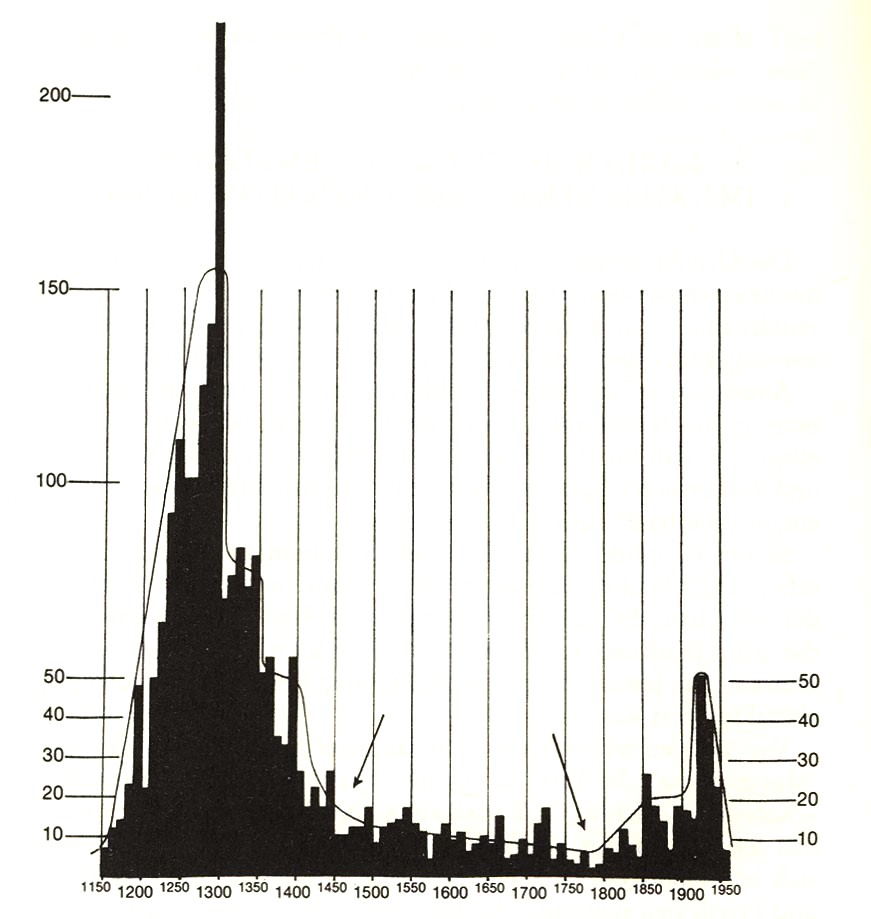
This chart shows depicts the enormous increase in city foundations in the high Middle Ages, beginning in the second half of the twelfth century (ca. 1150-1200). This increase in the number of cities and towns in Europe corresponded with an increase in the general population, from approximately 25 million in 1000 to around 75 million on the eve of the Plague of 1348. Bear in mind, though, that this chart records only the total number of cities and towns founded during a particular period; it says nothing about the population of those towns. Most of Europe's cities were not very large, by modern standards; in 1348, few cities had more than 50,000 inhabitants, and these would have counted as very large and powerful -- Paris, Bruges, Milan, Florence, Genoa and Venice fell into the category of cities with populations of that size. Far more numerous were cities in the 10,000-30,000 range: Nuremberg in Germany had perhaps 20,000; London had about 30,000.